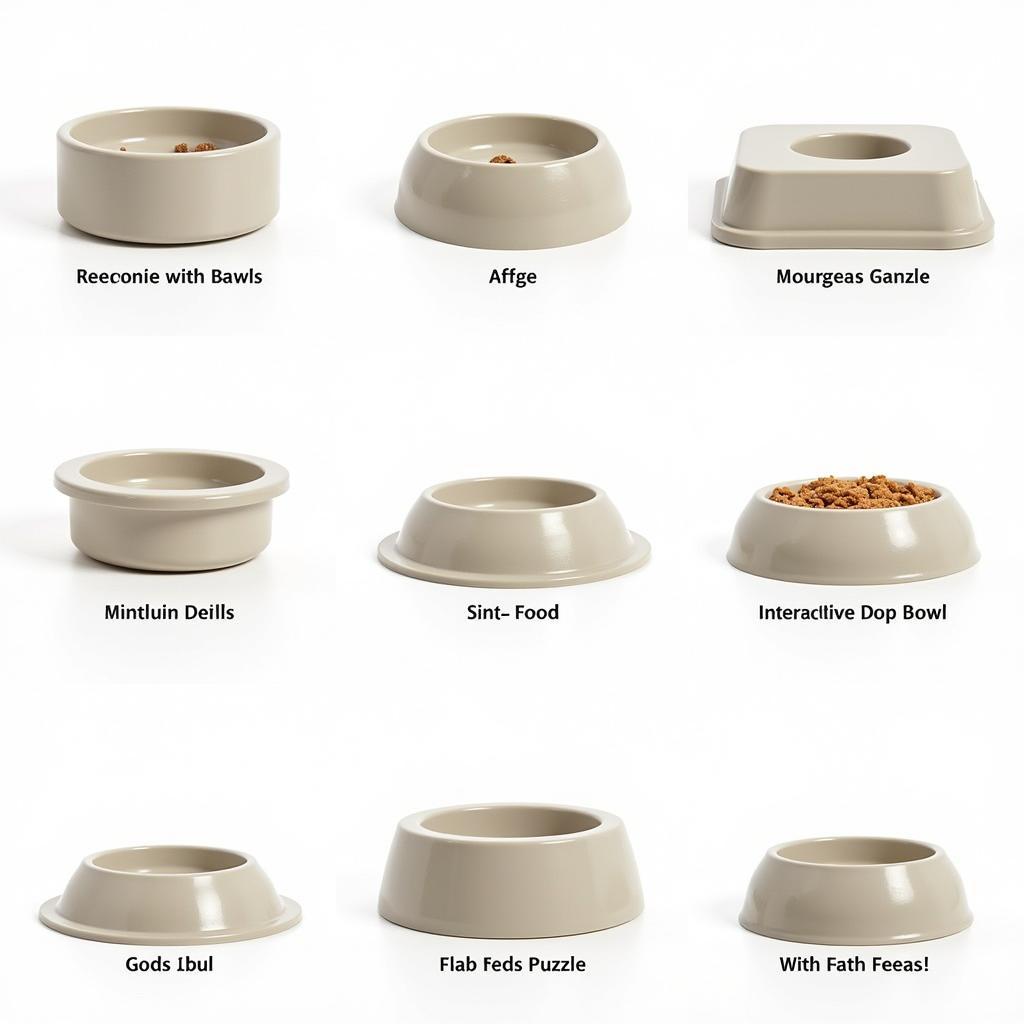Slow feed dog bowls have become increasingly popular in recent years, and for good reason. These innovative bowls are designed to slow down your dog’s eating, transforming mealtime from a frantic gobble-fest to a more relaxed and enjoyable experience. But are slow feed bowls just a trendy fad, or do they offer real benefits for your furry friend? Let’s dive in and explore the world of slow feed dog bowls together.
Why Choose a Slow Feed Dog Bowl?
While traditional dog bowls may seem perfectly adequate, they can encourage your dog to eat too quickly. This habit of rapid eating, known as bolting, can lead to a range of health issues, including:
- Choking: When dogs gulp down their food without chewing, larger pieces can get lodged in their throats, posing a choking hazard.
- Digestive Problems: Fast eating doesn’t allow enough time for proper digestion, often leading to vomiting, bloating, and discomfort.
- Weight Gain: When your dog inhales their food, their brain doesn’t have enough time to register fullness, which can contribute to overeating and weight gain.
A slow feed dog bowl directly addresses these problems by making your dog work a little harder to extract their food. The bowl’s unique design features ridges, mazes, or other obstacles that prevent your dog from gulping down large mouthfuls.
Benefits Beyond Slower Eating
Slow feed dog bowls offer a range of advantages that go beyond simply slowing down mealtime:
- Improved Digestion: By encouraging chewing and extending meal duration, slow feed bowls support healthier digestion and nutrient absorption.
- Reduced Bloat Risk: Bloat is a life-threatening condition that can affect large-breed dogs, and rapid eating is a major risk factor. Slow feed bowls can significantly reduce the risk of bloat by preventing your dog from swallowing excessive air.
- Mental Stimulation: Turning mealtime into a fun challenge can help alleviate boredom and provide mental enrichment for your canine companion.
“Slow feed bowls are more than just a trend,” says Dr. Emily Carter, a certified veterinary nutritionist. “They are a valuable tool that can enhance your dog’s overall well-being by promoting healthier eating habits and preventing potential health issues.”
Choosing the Right Slow Feed Dog Bowl
With a wide variety of slow feed dog bowls available on the market, finding the perfect one for your furry friend can feel overwhelming. Here’s what to consider when making your selection:
- Size and Breed: Choose a bowl size appropriate for your dog’s breed and food intake.
- Material: Slow feed bowls are available in various materials like stainless steel, ceramic, and plastic. Consider durability, ease of cleaning, and your dog’s chewing habits.
- Design: The complexity of the bowl’s design should align with your dog’s eating speed and temperament.
 Different Types of Slow Feed Dog Bowls
Different Types of Slow Feed Dog Bowls
Integrating a Slow Feed Bowl into Your Dog’s Routine
Introducing a slow feed dog bowl should be a gradual process to ensure your dog adapts comfortably:
- Start Slowly: Begin by offering a small portion of food in the slow feed bowl alongside their regular bowl.
- Positive Reinforcement: Praise and reward your dog for using the slow feed bowl to create a positive association.
- Monitor and Adjust: Observe your dog’s eating habits and adjust the bowl type or design if needed.
Transitioning to a slow feed dog bowl is a simple yet impactful way to enhance your dog’s mealtime experience and promote their overall well-being.
FAQs About Slow Feed Dog Bowls
Q: Are slow feed bowls suitable for all dogs?
A: Yes, slow feed bowls can benefit dogs of all breeds and sizes, especially those prone to fast eating or digestive issues.
Q: Can puppies use slow feed bowls?
A: Yes, introducing a slow feed bowl at a young age can help puppies develop healthier eating habits.
Q: How do I clean a slow feed dog bowl?
A: Most slow feed bowls are dishwasher safe. Hand washing with warm soapy water is also effective.
Q: Can slow feed bowls help with weight management?
A: Yes, by promoting a feeling of fullness and preventing overeating, slow feed bowls can aid in weight management.
Q: What if my dog gets frustrated with the slow feed bowl?
A: Start with a simpler design and gradually introduce more challenging bowls. If your dog remains resistant, consult your veterinarian.
Need More Help With Your Furry Friend?
Explore these helpful resources on Mina Cones Food:
- Dog Food Feeder and Storage
- Best Dog Food for German Shepherd Husky Mix
- Are Raised Food Bowls Good for Dogs
- Dog is Throwing Up Undigested Food
- Dog Food Puzzle Feeder
For personalized advice and support, contact our dedicated team at:
Phone Number: 02437655121
Email: minacones@gmail.com
Address: 3PGH+8R9, ĐT70A, thôn Trung, Bắc Từ Liêm, Hà Nội, Việt Nam.
We are available 24/7 to assist you with all your pet-related needs.